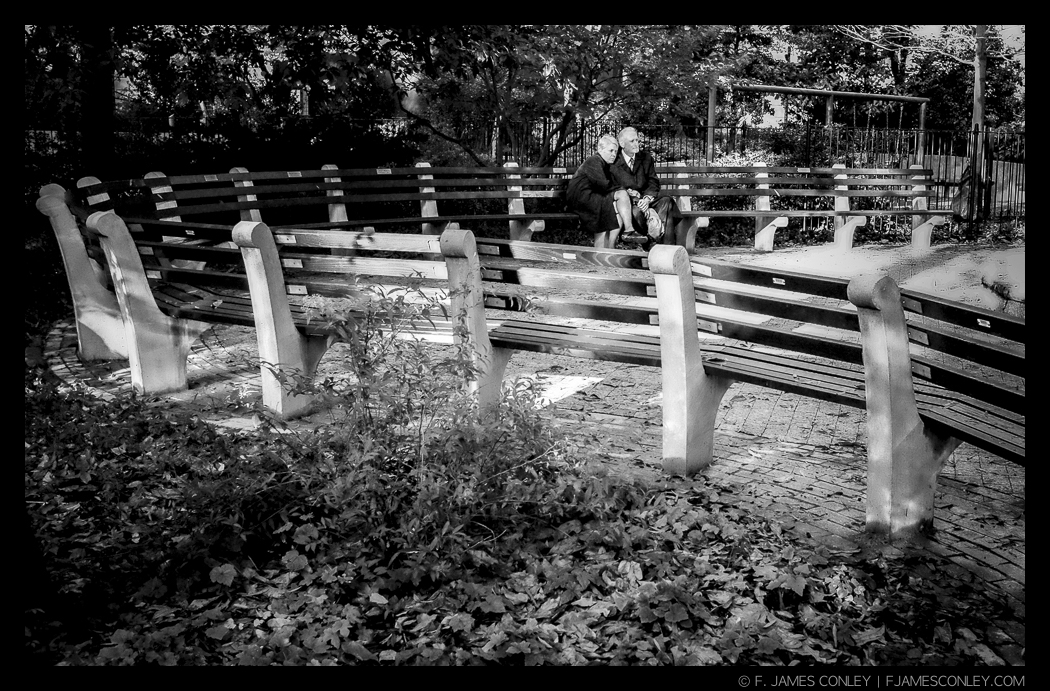Continuing my
exploration of the Fuji Monochrom and the achromatic capabilities of the
X100s, I took the Fuji for a stroll around the
southern tip of Manhattan.
 |
| Waiting for the uptown in the 212. |
The city that never sleeps always offers up great images. Lately, however, it seems that midtown and points north are becoming more deserted at night, while downtown all the way to the end of Canal Street is quite busy. Soho, Chinatown, and the East Village were all relatively heavy with pedestrian traffic, providing good chances for street photography. Maybe Midtown has finally gotten expensive enough that the only people who are able to afford to live there are trapped in offices.
 |
| Busy, no matter the hour. |
The majority of these images were shot with the X100s. A few, however, were shot on the
XE-1, which I've
set the same as the X100s. The XE-1 allows me the occasional use of wider angle lenses, so it's always in the bag. Both cameras use the X-Trans CMOS sensor (though the X100s has version II of that sensor) and the images are of identical quality.
 |
| The Fujis have amazing low light sensitivity. |
For some of the outdoor images, I used the "red filter" option on the X100s. It darkens the sky quite a bit, which can be useful for separating the foreground. Generally, though, my preference is for the achromatic tones to match a reasonable expectation of luminance, so I tend to stick with either the "yellow filter" or none. But it's interesting to explore the red option.
Indoors and at night, I strained the Fuji sensors. Some of these images are as high as ISO 12,800. All of the images here are JPEGs straight out of the Fuji, with minor adjustments in Lightroom. No image had more than 30 seconds of post-processing work. I certainly could draw more out the images by working on the RAW files, but this project is about finding the limits of the Fujis as achromatic cameras with the least amount of post processing possible. The goal is cameras that let me shoot more and tinker less.
 |
| Detail in the JPEGs is very impressive even at high ISO. |
It's also interesting to be using the Fuji Monochrom to speed up seeing for film. For me, estimating luminance and exposure compensation options has always been mentally taxing. Moreover, the many Lightroom tools designed to mimic film give a reference point for previsualizing film images. Using the Fujis side by side with the
Leicas, my film shots are looking better.
 |
| Using the "red filter" option gives some very dark skies. |
 |
| A model's life is never easy. Especially on the feet. |
 |
| Dinner in SoHo. |
 |
| Growing up fast in Brooklyn. |
 |
| If you want to shoot the streets, don't take cabs. |
 |
| The 90's are alive in Portland, and Brooklyn. |
 |
| Cuddles in Central Park. |
 |
| Night at the museum. |
 |
| It's well known that body parts are in New York landfills. This is how it happens. |
 |
| Photographers catch the sunset and the skyline. |
If you're experimenting with the Fujis as black and white cameras, I'd love to see your images and hear about your experiences. And be sure to use the hashtag "#fujimonochrom"
on Twitter!
















No comments:
Post a Comment